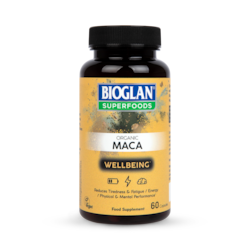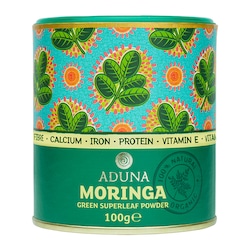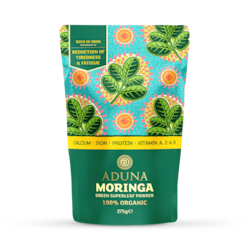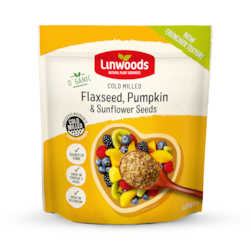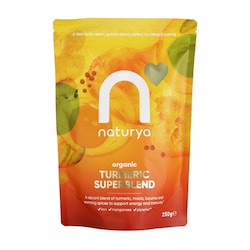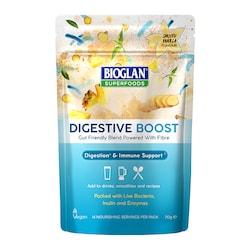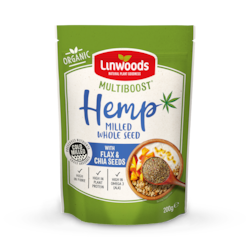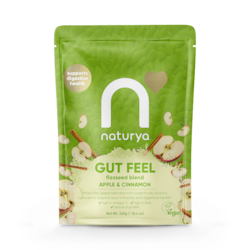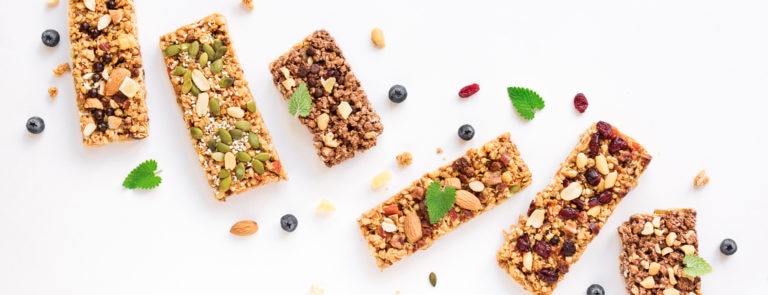15% off £30 OR 20% off £40
Code:DECIDE
What is maltodextrin?
Have you been wondering what maltodextrin is? Where can you find it, what does it do, and whether it’s good or bad for you? Learn more.
Have you heard of something called maltodextrin and are wondering why it’s in certain food? Why is it present in certain products and not others and what are the side effects of consuming it?
We tackle these key questions in this article, as well as discuss the widely-talked-about issue of whether or not maltodextrin is good for our bodies or not. Keep reading for all you need to know about maltodextrin…
What is maltodextrin?
Maltodextrin may be something not all of us have heard of, but it’s something most of us will have consumed without even knowing it.
It’s found in most processed and packaged food and, in terms of what it is, it’s a white, powdery, almost flavourless starch that’s most commonly made from rice, corn, potatoes or wheat. Take a look at the ingredients labels on any processed food, and we’re sure you’ll see maltodextrin somewhere on there, mainly towards the bottom.
And as for what this powdery starch does, it’s an additive that’s used to preserve the flavour of processed food. A fast-digesting carbohydrate, it’s also used to thicken up food, mimic fat content, and make products last longer.
Maltodextrin is made by taking starches from processed and packaged food and breaking them down via a process known as hydrolysis. This process involves using chemical reactions with water, additional enzymes and acids.
Summary
Maltodextrin may not be something we say or think about very often, but it’s used in most packaged and processed food as a thickening agent and/or preservative. You’ll find it on the ingredients lists of most highly processed food products.
Is maltodextrin good or bad for you?
If Googling this maltodextrin-related question has gotten you to this article, then you’ve most probably also spotted the many queries out there in relation to whether maltodextrin is safe for us to consume or not.1
Interestingly, maltodextrins are actually naturally produced in our intestine when we digest starchy foods. They have the same calorie density as sugars and carbohydrates.
On the whole, they’re used to replace sugar or fat in food, such as ice cream, dried food, cereals, sweets and snacks. And if you happen to eat a lot of this type of food, then you may be consuming a high amount of maltodextrin without even realising it.
The consequences of this are that it’s highly likely it may impact your blood sugar levels because, despite being low in sugar, maltodextrin has a high Glycaemic Index (GI) rating (between 80 and 120), and causes blood sugar spikes just like glucose does. To put this into context, sugar’s glycaemic value is 65.2
The higher the glycaemic value a food or additive has, the quicker it goes through the digestive system, enters the bloodstream and raises blood sugar levels. Therefore, if you’re trying to manage your blood sugar levels, foods containing maltodextrin are not the best choice, and eating too many of them can cause your blood sugar to rise. (For more insight on blood sugar read, ‘What is blood sugar?’)
What’s more, if you’re consuming a lot of maltodextrin then it’s most probably because you’re eating a lot of processed food, which is high in sugar and salt and low in minerals and nutrients, including fibre. Over time, this can lead to weight gain, high cholesterol levels and possibly Type 2 diabetes.
Summary
While maltodextrin is a white powder that may not taste of very much, it has a higher GI value than sugar. As a result, this means there’s a high probability of it impacting blood sugar levels. What’s more, maltodextrin is mainly found in processed and packaging foods, and eating a lot of this type of food can also lead to health issues, such as high cholesterol, and potentially, Type 2 diabetes.
Which foods contain maltodextrin?
As we’ve just mentioned up above, maltodextrin tends to be found in packaged and processed food.
Here are some examples3:
- Pasta, cooked cereals and rice
- Meat substitutes
- Baked goods
- Salad dressings
- Frozen meals
- Soups
- Sugars and sweets
- Energy and sports drinks
- Artificial sweeteners
Summary
You can’t see it, but maltodextrin is used by manufacturers in a lot of food, mainly products with a longer shelf life or products that have been highly processed. You’ll also find maltodextrin in some beauty items, and it can also be found in some livestock food too.
Is maltodextrin a sugar?
No, maltodextrin isn’t a sugar although it behaves in a similar way sugar does when it comes to impacting our blood sugar levels. It happens to be a sugar substitute, with a much higher GI value than table sugar.
Maltodextrin is actually a polysaccharide, which is a specific type of carbohydrate made from a cluster of sugar molecules that are all bonded together. Generally speaking, maltodextrin is a starch that’s made from multiple sugars, which tend to come from corn, wheat, rice, potato or tapioca.4
Every tiny piece of maltodextrin contains short chains of sugars. After hydrolysis, maltodextrin is purified, then spray-dried to turn it into its signature powder form. While maltodextrin may contain sugar molecules, it doesn’t taste of sugar or sweet. In fact, it doesn’t really have much of a taste.
Summary
Maltodextrin isn’t a sugar, but when it’s in your system, it acts in exactly the same way sugar would do – e.g. causes a spike in blood sugar levels. However, maltodextrin’s impact on the body is far greater than sugar because of its much higher GI value.
Is maltodextrin the same as MSG?
No, maltodextrin and MSG aren’t the same thing, despite the fact our bodies may break it down in a similar way. As a result of this, if you are sensitive to MSG, then chances are you may be sensitive to maltodextrin too.5
MSG, which is short for monosodium glutamate, is a flavour enhancer and, just like maltodextrin can be found far and wide in a lot of different ingredients. It is a natural by-product of processing proteins and can be a bit tricky to track down, mainly because it’s not always listed on ingredients as MSG.6
Other names for MSG include:
- Glutamic Acid (E 620)2
- Glutamate (E 620)
- Monosodium Glutamate (E 621)
- Monopotassium Glutamate (E 622)
- Calcium Glutamate (E 623)
- Monoammonium Glutamate (E 624)
- Magnesium Glutamate (E 625)
- Natrium Glutamate
- Yeast Extract
- Anything hydrolysed
- Any hydrolysed protein
- Calcium Caseinate
- Sodium Caseinate
- Yeast Food
- Yeast Nutrient
- Autolyzed Yeast
- Gelatin
- Textured Protein
- Soy Protein Isolate
- Whey Protein Isolate
- Anything protein
- Vetsin
- Ajinomoto
Summary
It’s widely assumed maltodextrin and MSG are one of the same thing, but they aren’t at all. However, there are some similarities due to the fact they’re broken down in the body in a similar way, and while maltodextrin is mainly a thickener and preserver, MSG is a flavour enhancer. So both of them play a role in enhancing food in some sort of way.
Is maltodextrin a gluten?
While it’s not 100% a gluten, it is possible for maltodextrin to contain traces of gluten when the starch that’s been used to make it contains gluten. It is possible for maltodextrin to be gluten-free, providing the source ingredients do not contain any wheat.7
Given the fact the main sources of maltodextrin are corn, price and potato, gluten-free sources of maltodextrin are relatively common. However, if you have a gluten intolerance, you should bear in mind that even though the production process may remove most of the protein component, maltodextrin that originates from wheat may still contain some trace sources of gluten. (For more on gluten and how it can impact the body read, ‘What is gluten intolerance?’)
Summary
No, maltodextrin isn’t classed as a gluten outright. However, if the ingredients that are used to make it do contain gluten, mainly wheat, then this can result in maltodextrin containing gluten. Even after the production process, it’s possible for maltodextrin to contain some traces of gluten. For 100% peace of mind, always choose maltodextrin that’s derived from non-wheat sources.
What are the alternatives to maltodextrin?
If you are concerned about your maltodextrin intake and would like to reduce it due to its effect on your blood sugar levels or for wider health reasons, then there are some alternative food choices you can make to help make this happen.8
There are several other food additives out there, not just maltodextrin, that are used to thicken and stabilise food. These alternatives include guar binding gum and pectin, which is a carbohydrate that’s made from fruits, vegetables, and seeds. Meanwhile, tapioca starch and arrowroot starch are among the alternative thickening agents to maltodextrin.
In addition, there are several different flavouring preservers too. They include sugar alcohols, such as sorbitol and erythritol, and sweeteners, such as stevia. The benefit of sugar alcohols is that they contain less calories than maltodextrin and therefore have less of a dramatic impact on blood sugar levels. However, some people may find that they cause bloating and flatulence.
Some people find stevia particularly appealing because it contains no calories and has minimal impact on blood sugar levels. However, be mindful of the fact that some products include a blend of stevia and either maltodextrin or dextrose, and this blend can affect blood sugar levels.
Summary
Numerous alternatives to maltodextrin do exist that preserve food, in the same way that maltodextrin does. There are also several substitutes that are used to thicken food too. These alternatives range from pectin to arrowroot starch.
To conclude...
Maltodextrin is found in a multitude of food, far more than you could possibly imagine. Most of these foods tend to be highly-processed, with the maltodextrin being added to help thicken them up, as well as help make them last much longer.
While maltodextrin may not be a sugar, it is very similar to sugar in the way that it can cause blood sugar levels to peak, mainly due to its high GI value, which is significantly higher than sugar’s GI value. What’s more, while it may not be a gluten, it may contain gluten if it’s made from wheat, and there may still be traces of gluten, even after the production process.
This fast-digesting carbohydrate, which is also used to also used to mimic fat content, isn’t to be confused with MSG either, despite the fact both maltodextrin and MSG work are designed to enhance food products. High maltodextrin levels and processed foods go hand-in-hand, so if you are eating lots of processed food, then chances are you’re also consuming lots of maltodextrin too, which can potentially lead to health issues over time.
For more on sugar consumption and its impact on our bodies, check out this article, ‘Why is sugar bad for you?’
Last updated: 5 March 2021
- https://greatist.com/health/maltodextrin-dangers#is-it-safe-to-eat
- https://www.mdvip.com/about-mdvip/blog/read-your-food-labels-watch-out-maltodextrin
- https://www.hcmsonline.org/resources/news/295-what-is-maltodextrin-and-is-it-safe
- https://ataqfuel.com/blogs/ataq-fuel-news/maltodextrin-why-we-use-it-as-our-sugar-substitute-1
- https://durefoods.com/what-is-maltodextrin/
- https://www.hungryforchange.tv/article/sneaky-names-for-msg-check-your-labels
- https://www.hcmsonline.org/resources/news/295-what-is-maltodextrin-and-is-it-safe
- https://www.hcmsonline.org/resources/news/295-what-is-maltodextrin-and-is-it-safe



